Table of Contents
ToggleIn the cloud computing arena, two heavyweights often steal the spotlight: PaaS and IaaS. Imagine them as the quirky siblings of the tech world—one loves to build and create, while the other prefers to lay a solid foundation. PaaS, or Platform as a Service, offers developers a playground for building applications without the hassle of managing infrastructure. On the other hand, IaaS, or Infrastructure as a Service, serves up the raw materials to construct your digital empire, giving you control and flexibility like a kid with a box of LEGO.
Overview of PaaS and IaaS
PaaS and IaaS are crucial elements of cloud computing, each serving distinct purposes. PaaS, or Platform as a Service, offers a managed environment for developers to build, deploy, and maintain applications. By eliminating infrastructure concerns, PaaS fosters creativity in coding and simplifies the development process.
Definition of PaaS
PaaS delivers a runtime environment where developers can access tools, libraries, and frameworks. This service supports various programming languages, enabling flexibility in application creation. Developers focus on writing code without dealing with server management or storage solutions. Examples include Google App Engine and Microsoft Azure App Services, which provide these essential services and capabilities.
Definition of IaaS
IaaS, or Infrastructure as a Service, supplies virtualized computing resources over the internet. Users gain access to essential components such as servers, storage, and networking. This model grants comprehensive control over the infrastructure while necessitating management of the operating systems and applications. Solutions like Amazon Web Services EC2 and Microsoft Azure Virtual Machines fall under this category, ensuring reliable infrastructure for varied workloads.
Key Differences Between PaaS and IaaS

PaaS and IaaS serve distinct purposes in cloud computing. Understanding these differences helps organizations choose the right model for their needs.
Deployment Model
PaaS operates on a higher level than IaaS, providing a complete platform for application development. Developers work with pre-built tools and environments. User focus centers around coding and deploying applications without infrastructure worries. In contrast, IaaS primarily offers raw computing resources, letting users create their virtual infrastructure. Customers configure and manage servers and storage based on their specifications. Deployment speed and flexibility differ significantly; PaaS allows quicker setups, while IaaS demands more configuration effort.
Management and Maintenance
Management varies dramatically between PaaS and IaaS. With PaaS, providers handle infrastructure, middleware, and runtime environments. This arrangement frees developers from maintenance tasks. Users concentrate on writing code and deploying apps, enhancing productivity. IaaS users manage not only the virtual machines but also the operating systems and networking elements. This requires a stronger technical skill set for effective maintenance. Companies using IaaS often dedicate resources to handle updates, security, and performance tuning.
Scalability and Performance
Scalability features prompt different approaches in both PaaS and IaaS. PaaS solutions enable automatic scaling based on application demand, often requiring minimal user intervention. This flexibility helps applications respond to varying traffic patterns efficiently. IaaS offers scalability as well, but it relies on user-initiated actions. Users must manually adjust resources or establish scripts for automatic scaling. Performance capabilities differ; PaaS environments often optimize configurations out of the box, while IaaS performance depends on user management and infrastructure choices.
Use Cases for PaaS
PaaS caters to several different use cases, positioning itself as an adaptable solution for various needs. Organizations leverage it primarily for application development, emphasizing speed and efficiency.
Application Development
PaaS significantly enhances the application development process. Developers use it to create, test, and deploy applications without managing underlying infrastructure. They can access tools and services tailored for specific programming languages, enabling streamlined workflows. For instance, robust APIs and pre-built components facilitate faster prototyping. Collaboration is also easier, as teams can work within a shared environment, previewing changes in real time. Businesses that prioritize rapid deployment can greatly benefit, utilizing PaaS to launch applications more quickly than traditional methods allow.
Collaboration Tools
Collaboration tools within PaaS platforms improve team interactions. Developers utilize integrated communication features, such as chat and documentation sharing, enhancing project coordination. Real-time updates on application status keep all stakeholders informed, reducing miscommunication. Access controls ensure that only authorized personnel can make changes. Additionally, shared workspaces promote collective input, often leading to more innovative solutions. Teams that adopt these collaborative features find their development processes more agile, adapting swiftly to project needs and stakeholder feedback.
Use Cases for IaaS
IaaS provides versatile solutions for various organizational needs, particularly in data storage and virtual networking.
Data Storage Solutions
Organizations leverage IaaS to create scalable data storage systems. Businesses benefit from the ability to expand capacity based on demand. Providers offer options like block storage, object storage, and file storage, allowing users to choose the appropriate method for their data needs. Reliability is key; IaaS ensures data is backed up and easily recoverable in the event of hardware failure. Examples include using Amazon S3 for object storage and Microsoft Azure Blob Storage for vast storage capabilities.
Virtual Networking
IaaS facilitates advanced virtual networking solutions for enterprises. Network configurations like virtual private networks, firewalls, and load balancers can be easily set up and managed. Business agility improves when organizations can modify their network infrastructure quickly to accommodate changing needs. Direct connectivity options are available, allowing users to connect their on-premises data centers to cloud services seamlessly. With tools such as AWS Virtual Private Cloud and Azure Virtual Network, users gain control over security and traffic management.
Choosing between PaaS and IaaS ultimately hinges on an organization’s specific needs and technical capabilities. PaaS empowers developers with a managed environment that streamlines application creation and deployment. This model is ideal for teams focused on rapid development without the burden of infrastructure management.
On the other hand, IaaS provides the flexibility and control necessary for businesses that require customized infrastructure solutions. It suits organizations with the technical expertise to manage their resources while benefiting from scalable computing power.
By understanding these two cloud service models, businesses can make informed decisions that align with their operational goals and enhance their digital strategies.







